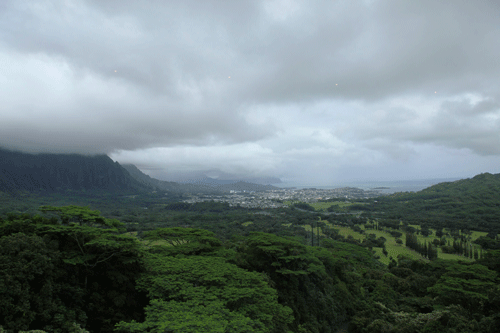
The government has merged National Mission for a Green India, which aims afforestation at 10 million hectares of land over the next decade, with MGNREGA to increase and improve the country's forest cover.
Modern technology like remote sensing will be used to monitor the progress of this initiative regularly.
Currently, green works such as water harvesting, afforestation and farm foresty are undertaken under the Mahatma Gandhi National Rural Employment Guarantee Scheme implemented by Rural Development Ministry.
The government is also eyeing at increasing 10 million hectares of forest cover under the 'National Mission for a Green India' being implemented by the Environment Ministry.
"To further synergise these efforts and to collectively address the climate change concerns, the government has come out with convergence guidelines after consulting both Environment and Rural Development Ministries," a senior government official said.
The convergence guidelines sets out the approach to be adopted to strengthen co-ordination at field-level for developing forest cover and improving forest-based livelihoods for about three million households.
According to the guidelines issued by the Environment Ministry, all lands including village common lands, community lands, revenue wastelands, shifting cultivation areas, wetlands and private agricultural lands will be eligible for afforestation under this convergence.
Under MGNREGA, forest works such as pre-plantation, pit digging, planting and watering, fencing, plant support and protection activities, weeding, mulching and manuring the plants among others can be undertaken for afforestation.
State Forest Development Agencies (SFDA) will provide technical advice on plant species suitable for area, raise nurseries and deliver required plant material to each gram panchayat before July each year meeting the cost from MGNREGA funds.
"However, where there is a shortage of funds under MGNREGA, it may be topped up from Green India Mission funds," the guidelines said.
According to the guidelines, SFDA will also provide material for fencing, organic manure and train youth from MGNREGA households for forest conservation and other related activities.
Under MGNREGA, all wages will be met as a 100 per cent central grant and the material component will be shared on 75:25 ratio between the Centre and state governments.
While under the Green India Mission, the government will provide 90 per cent funds for implementing the scheme in northeast and special category states while 75 per cent for rest of India.
Last year, the Environment Ministry was pulled up by a parliamentary panel for failing to effectively implement the Rs 3,044 crore national afforestation programme that was launched in 2002.
The panel also found that India's forest cover had decreased by 367 sq km between 2009 and 2011.